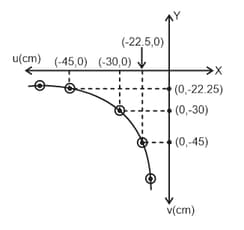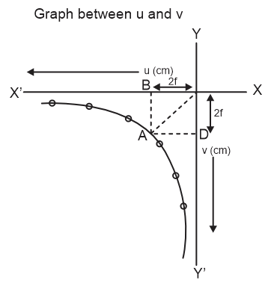What should be done in a meter bridge experiment to rectify a deflection in one direction indicated by the galvanometer if the null point is not reached?
Important Questions on Experiments Related to Optics
To draw curve in order to find the angle for the minimum deviation, a student has to take observations in the range . Which of the following statements is true about the number of observations to be taken by him?
A resistance wire connected in the left gap of the meter bridge balances a resistance in the right gap. This happens at a point where the bridge wire is divided in the ratio of . Assuming the length of the wire to be , calculate the length of the resistance wire?
In an experiment of finding focal length of a concave mirror by u-v method, a student prepares following graph of u versus v graph.

Focal length of mirror is nearly
As shown, in a lab experiment, a student makes a graph based on his observations. In the u-v graph for a concave mirror, he drew lines OA, AB, and AD. what is the significance of point A?


